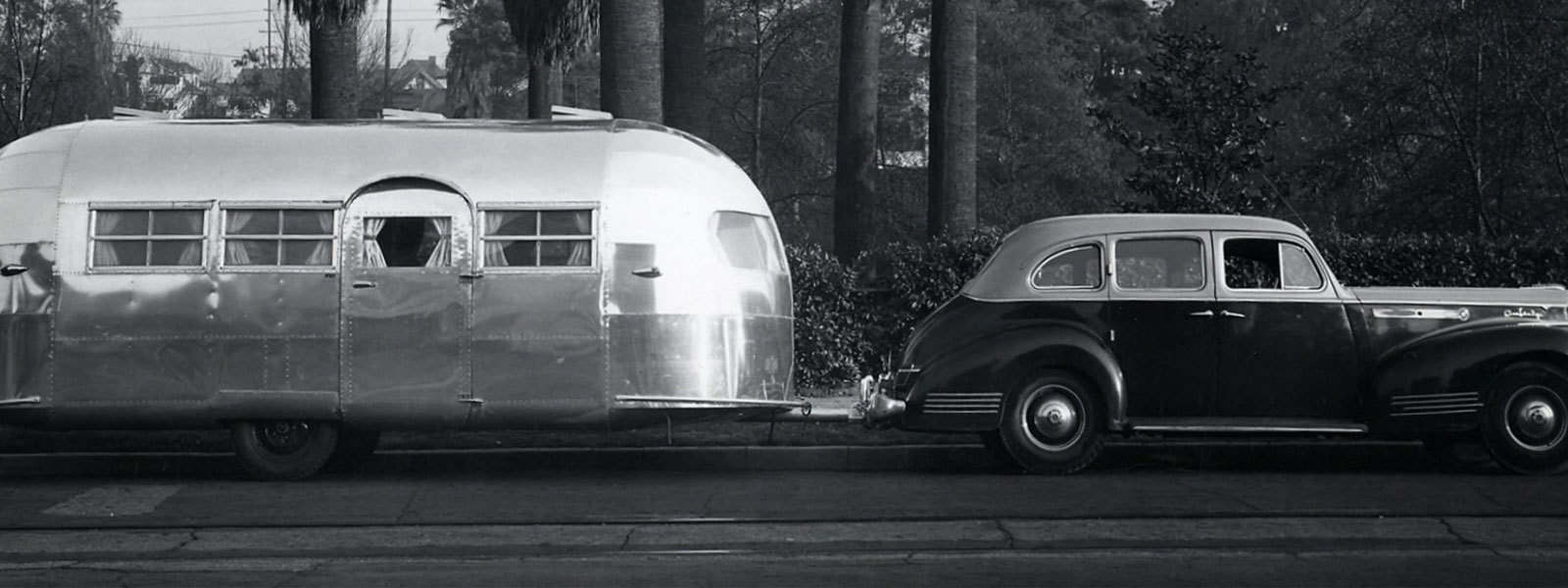About Wally
In 1931, Airstream began with Wally Byam’s dream: to build a travel trailer that would move like a stream of air, be light enough to be towed by a car, and create first-class accommodation anywhere.
Every inch of an Airstream has a function. Airstream is the most thoroughly tested brand in trailer history. Its engineering is the culmination of over 80 years' experience plus millions of miles on roads throughout the world.
With Airstream, there is no planned obsolescence. Airstreams of the 1930s are still on the road today, sturdy and modern as ever. They are intended as a lifetime investment in happiness.
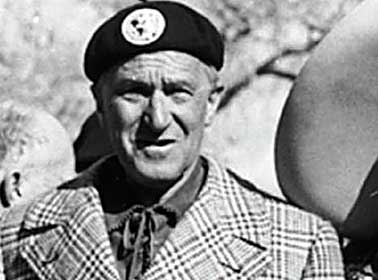
1920s
Airstream’s first ride was in 1929, but really Airstream was born the first time Wally Byam left home. Wally’s early life – schooling, sailing, camping, and working – all came together to form a vision of the open road, the outdoors, and freedom. That vision was realised in a tent on a Model T chassis. It was realised in a boy working to pay for his school. It was realised when Wally Byam built that first trailer, and it’s still alive today.
Self Made Man
Everything that Wally Byam got in his life was through his own hard work and perseverance. Wally graduated from Stanford in 1921, and if his family helped him pay for it, there’s no record of it. It’s believed that he paid for college by working several jobs. During the school year Wally would work in concessions for Stanford football and basketball games, and he was the house manager at his Sigma Chi fraternity. It’s believed that in the summers, he earned money working as a sailor, and that time spent on the sea fostered Wally’s love of travel and of experiencing the world, and also inspired some of Airstream’s early designs.
The First Airstream
In 1929, Wally Byam built the world’s first Airstream trailer. It started out as a tent contraption that he built on a Model T chassis, but it wasn’t a lot of fun in the rain (and Wally’s first wife Marion wasn’t a fan). So he replaced the tent with a teardrop-shaped permanent shelter – and added a stove and ice chest, too. It was easy to tow and caught the eye of other travellers, so much so that enough people asked Wally about it for him to decide it might be “a pretty good business to get into.” Good thing he did!
Wally and Neil
Wally also worked for Stanford’s newspaper, and after he graduated he used that experience to secure a job at the Los Angeles Times. As at Stanford, he worked as an advertising manager, but after a short time he left the paper to join a new organisation called the Penny Newspaper Group. That organisation was founded by Cornelius “Neil” Vanderbilt, Jr, and while this would be their first meeting and first collaboration, Wally and Neil would become friends for life.
1930s
As the 1930s dawned, interest in Wally Byam’s early trailer designs was growing. So much so, in fact, that he couldn’t handle the demand on his own from his yard anymore, or by sending five-dollar manuals around the country. People had seen the first Airstreams, and they wanted to get on-board. A factory would open. A trailer would debut. But then a Great Depression would jeopardise everything.
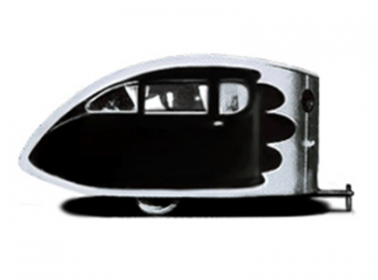
The Torpedo Debuts
Every great legacy starts somewhere, and for Airstream it was the Torpedo Car Cruiser. The Torpedo was the first factory-produced Airstream model, and by early 1932 there were over a thousand Torpedoes on the road. Soon it was joined by the Silver Bullet and Silver Cloud, but the Torpedo was the forerunner of every Airstream trailer that you see on the road and off it today.
From Hobby to Business
After the success of Wally’s Popular Mechanics guide to building a trailer, he decided that it’d be a lucrative business to get into, so when neighbors started asking him to build trailers for them like the one in his front yard, he obliged. Noise complaints quickly followed, so Wally rented a building and opened a small trailer factory in Culver City, California in 1931 – Airstream’s first factory. They soon relocated, but the Airstream dream was born.
Trailers Boom - then bust
When Wally Byam opened the first Airstream factory in California, there were fewer than 50 trailer manufacturers registered for business. In the next five years, demand for the trailer lifestyle exploded and the industry followed suit – by 1937, there were around 400 manufacturers competing for customers. Unfortunately for many of those daring entrepreneurs, the Great Depression and World War II took a toll, and today, only Airstream remains.
1940s
Airstream survived the Depression. World War II would be another challenge. Factories closed, and Wally Byam and others joined the war effort. But after the fighting stopped, Airstream was back, and soon better than ever. And as the company grew, Wally would have a chance to get on the road, battle-test his trailers – and plant the seed of a caravan revolution.

The Curtis Wright Clipper
As World War II drew to a close, Wally Byam was working at Curtiss-Wright to help manufacture airplanes for the war effort. When the war ended, though, he saw an opportunity. They had an idle plant, and he had a trailer business to get back to. So the Curtis Wright Clipper was born – similar to the Airstream Clipper in many ways, but improved with Wally’s new manufacturing know-how. This would be Wally’s first airplane-constructed trailer, but it wouldn’t be Airstream’s last.
The War Years
When the United States entered World War II after the attack on Pearl Harbor, aluminum became hard to come by. In fact, the government ordered that travel trailers could only be made as part of the war effort, not for public recreation. Wally saw Airstreams as a mode of travel, not a substitute for a house, so he decided to close up shop. For the duration of the war, Wally and many Airstream crew members found employment in various aircraft factories in California. The experience they got from working on military planes would end up serving Airstream quite well at war’s end indeed.
The First Adventure
In 1948, Wally went to Europe with his friend Neil Vanderbilt to tour the war-ravaged land. Neil’s goal was to film postwar Europe for lecture tours, but Wally’s was all for Airstream. They traveled the continent in an Airstream trailer, and Wally wanted to road test the trailer to find weaknesses that needed fixing, as well as improvements that could be made. This may not have been the plan at the time, but the trip would end up as a precursor to the Airstream caravans that would follow in later years. Two friends on the road together – how fun!
1950s
In the 1950s, Airstream went through a lot of changes, and mostly for the good. The old factory was outgrown. Wally Byam led a caravan of trailerites outside American borders for the first time. Innovation continued, inside the company and out. By decade’s end, in a lot of ways Airstream had made the leap from being a travel trailer company to being a movement and a culture that was shared by thousands.
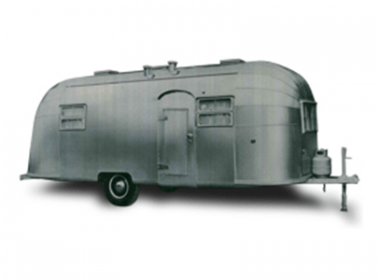
Moving East
By 1952, Airstream had outgrown its Los Angeles plant and desperately needed to expand. Rather than staying on the West Coast, Wally traveled east to scout locations across the Midwest. He spent a summer looking in Indiana, Illinois, and Ohio before finding a factory for sale in Jackson Center, Ohio. With Neil Vanderbilt on the board and Airstream’s obvious success, funding was easy to find, and soon Wally had his ideal second location locked down. And it turned out to be a great choice – more than sixty-five years later, Airstream is still making trailers in Jackson Center.
First Caravan
In 1951, Wally Byam decided to travel with a group of friends from Texas to Nicaragua. When a magazine picked up the story, he invited others to join in the Los Angeles Times. He expected about 35 trailers to show up; he got 63. The first caravan wasn’t the smooth ride today’s Airstreamers are used to – bad roads and bad weather led to equipment failures, and many caravanners dropped out early. Only 14 completed the trip, and Wally said he’d never do it again. Luckily for all of us, that vow lasted only a year!
Necessity is the mother of Invention
When you’re constantly trying to push the envelope on the road, you need to innovate. As people took Airstream trailers to new and more challenging locales, they needed more. And Wally Byam fostered that, urging people to create what they need when it didn’t already exist. In 1954, he convinced Mark Bowen of Bowen Water Heater Co. to develop the first hot water system ever in a trailer. The 1958 Airstream International was developed as the first-ever “self-contained” travel trailer – one with full freedom from external trailer hookups, like outside sources of power. With new capabilities, Airstreams could go farther for longer than ever before.
1960s
For the first three decades of its existence – and maybe even longer – Airstream and Wally Byam were synonymous. But the 1960s changed that. Wally passed away, and Airstream no longer had its founder and leader. There would be turmoil and there would be change, but nobody should be surprised that the company and the idea that Wally devoted his adult life to was grand enough and strong enough to live on.

A big Change
In 1969, the Airstream trailer had its first major redesign in over 30 years, with an internal facelift as well as exterior and structural changes. The end result was an Airstream with rounder edges and more streamlined shape, a more luxurious and comfortable interior, and a more distinct “bullet” shape. It even added a foot of length and four inches of width. It was a big step on the path from Wally’s first trailer to the one you see on the road today.
A Legend Passes
After battling cancer with his trademark tenacity, Wally Byam passed away on July 22, 1962. He left behind an Airstream company at its peak, working to meet the demand that Wally’s dreams and hard work had created for travel, adventure, and experiencing the world first-hand. After some competition between Wally’s lieutenants Art Costello and Andy Charles, Costello was voted Airstream’s new president a year later.
Out of this world
When humans first visited the moon in 1969, it was feared that the astronauts who walked on its surface might bring back disease or other maladies with them. NASA took every precaution, and it was decided that the Apollo 11 trio would be quarantined upon their safe return. Airstream was tasked with constructing a “mobile quarantine unit” that could be taken to the USS Hornet, which would greet Neil Armstrong, Buzz Aldrin, and Michael Collins. There’s even a famous photo of President Richard Nixon speaking to the trio from outside!
1970s
With a recession and a gas crisis, the 1970s weren’t a great decade for the auto industry as a whole, let alone travel trailers and Airstream. Driving for fun wasn’t on the table for many people. And that brought change to Airstream. For the first time in the company’s history, it left California – and for good. New products were introduced, unlike anything Airstream had done before. But even in a time of flux, with change everywhere, what remained was undeniably Airstream.

Coming back Together
As a recession and the Middle East gas crisis hit American drivers hard in the late 1970s, it did the same to Airstream. With the expansion of the Jackson Center facility and a need to consolidate, Airstream finally made the move east complete. The California plant was closed in 1978, and all manufacturing and executive operations would move to the Ohio complex – where they remain today.
Expanding Once Again
In the late 1950s, Airstream had purchased four acres in Jackson Center, Ohio, near our Midwest factory. In 1971 a seed was planted there, and from it grew the world’s most modern trailer manufacturing facility. The new, massive plant – 150,000 square feet – is still operating today, churning out trailer after trailer just as it did when it first opened.
Spreading Out
For the first four decades or so of Airstream’s life, we were exclusively a travel trailer company – Wally Byam had thought several times about diversifying and producing a motorhome, but each time decided against it. In 1974 that all changed. With leadership wanting to avoid being entirely dependent on one product for revenue, the Argosy motorhome debuted. Sales were modest, and the Argosy line would be discontinued in 1979. But the will to innovate would live on in later models like the Land Yacht motorhome and the Interstate touring coach.
1980s
Since Wally Byam’s death, Airstream had gone through periods of great prosperity and periods of great hardship. But in the 1980s, Airstream found stable footing once again. New ownership came in, and ushered in an era of success that continues to this day. And with the silver bullet trailer gaining retro icon status, we were able to keep the old with the new.

Venturing to New Lands
The Wally Byam Caravan Club International has been around since the 1950s, just a few years after Wally’s first caravan, but in the 1970s and 80s they collaborated with Airstream itself to hold numerous rallies and caravans around the world – even some places many Americans weren’t as keen on visiting at the time. Only about a decade after President Richard Nixon famously went to China, in 1985 an Airstream caravan followed him there for the first time.
Under New Management
Airstream leadership had been in flux for years after the passing of Wally Byam, with control of the company changing hands several times in the next few decades. In 1980, stability came once again. Wade Thompson and Peter Orthwein, owners of Hi-Lo Trailers, saw the market starting to pick up and moved to form a new company, Thor Industries, and acquire Airstream. And that association continues to this day, over thirty years later.
Becoming an Icon
The design and beauty of the Airstream trailer have gained it many admirers, and after decades of touring the roads and campsites of America (and the world), it’s gone from being an oddity to a true American icon. One example? In 1987, Money magazine chose the Airstream travel trailer as one of “99 things that, yes, Americans make best” alongside titans of American industry like Coca-Cola and Heinz ketchup. That’s not bad company, is it?
1990s
Airstream is a company that spans eras – we appreciate our history very much, as you can see, but we also look forward whenever possible. In the 1990s, we embodied that generational bridge. New efforts were started to honor and preserve Airstream’s greatest historical resource, the trailers themselves. And with more products and updated designs, a whole new generation of Airstreamers could get on the road in style.
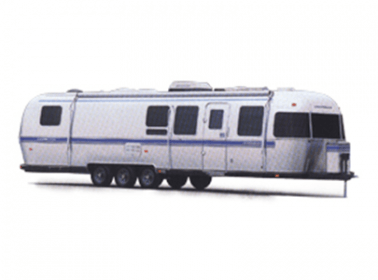
In with the New
In addition to honoring Airstream’s rich history, the 1990s saw a rededication to newer generations of travelers. To attract younger buyers, the Safari was introduced. With a cost 20 percent less than its contemporaries, it was easier to afford while maintaining the quality Airstream demands. And with a weight 20 percent lighter than a traditional trailer, it could be towed by lighter vehicles. It was a hit, and quickly about half the Airstreams being sold were Safaris.
In with the Old
With the quality and longevity of Airstream and our trailers, often an individual trailer can still find great use for decades or even longer. In the late 80s and early 1990s, interest in older Airstreams began to grow, including restoring them to original glory and renovating them to mix vintage and modern. To meet this demand, in 1993 a new chapter within the Wally Byam Caravan Club International was formed, appropriately named the Vintage Airstream Club. To join, owners have to have a trailer that’s at least 25 years old.
The Old becomes New
As for the new trailers rolling off the line, it had been since 1969 that any major design change had been made. In 1994, the first redesign in almost 30 years was made, adding about five-and-a-half inches in width in addition to a total interior change. Along with changes to profile and structure and shape, these alterations made a bigger, more comfortable trailer while maintaining performance – and the Airstream that you see on the road today.
2000s
We’re very proud of what’s come before us, in the near-century Airstream trailers have been on the road. In the past ten years we’ve seen the Wally Byam Caravan Club International and Airstream itself pass major milestones, and we hope to see many more. That’s why we’re also always looking forward to the future, and trying to develop new, better trailers and other products so that Airstreamers can always enjoy the open road in comfort and without worry.

Seventy-five years on the Road
The next year, Airstream itself had its 75th birthday. The silver bullet design has stood the test of time, and so has the riveted-aluminum construction. The company’s longevity is reflected in the individual trailers we build – in 2006, 65% of the Airstreams that had been built since Wally Byam’s first trailer were still on the road. In fact, some of those aged warriors included some of the ones built from the five-dollar plans Wally sold before the first factory was even open.
A Half-century of Community
In 2005, the Wally Byam Caravan Club International celebrated its 50th anniversary. From the first Central American caravan Wally led to his adventures across Europe with Neil Vanderbilt, from tours of the United States to trips to Africa and China, the WBCCI has spent half a century helping Airstreamers meet each other, form lasting bonds and memories, and travel the world safely and enjoyably.
Growing the Family
The 2000s saw a major expansion in the things Airstream could offer prospective trailerites. From the Base Camp trailer to the returning Classic motorhome to the Interstate touring coach, there has never been more variety available under the Airstream name. Some models come and go, but quality and commitment to innovation never will – it’s part of what makes Airstream what it is.
2010s
The way people want to travel sometimes changes as time goes by, and it’s in the Airstream thinking to keep our finger on the pulse of those changes. During the 2010s we launched the Nest, a travel trailer made of fiberglass rather than our signature aluminum. In fact, the idea was originally one of Wally’s! It harked back to his 1950s experiments with bringing a fiberglass Airstream to the public. In addition, we continued to develop new variations on the classic Airstream theme…

Addition of Bambi
Originally a nickname for Airstream’s smallest single-axle trailers, Bambi is now official – its own range. The smart floorplan makes the most of the available space, without compromising Airstream’s design aesthetic or commitment to quality. The perfect travel trailer for those who want to “just hitch up and go”, the Bambi is a nimble and lightweight offer, able to be towed by most midsized cars.
Addition of Basecamp
Ever-aware of lifestyle trends and changing needs, Airstream invested time and expertise in developing the Basecamp model. Perfect for more rugged terrain or for active types looking to go off the beaten path, it’s a smaller, lighter caravan with increased ground clearance – all achieved without compromising Airstream’s classic qualities. The sing-out feature is the rear hatch, so drivers can load bike, board or other large leisure gear with ease.
Wally’s Creed
“In the heart of these words is an entire life’s dream. To those of you who find in the promise of these words your promise, I bequeath this creed . . . my dream belongs to you.”
To place the great wide world at your doorstep for you who yearn to travel with all the comforts of home.
To provide a more satisfying, meaningful way of travel that offers complete travel independence, wherever and whenever you choose to go or stay.
To keep alive and make real an enduring promise of high adventure and faraway lands…of rediscovering old places and new interests.
To open a whole world of new experiences…a new dimension in enjoyment where travel adventure and good fellowship are your constant companions.
To encourage clubs and rallies that provide an endless source of friendships, travel fun and personal expressions.
To lead caravans wherever the four winds blow…over twinkling boulevards, across trackless deserts…to the traveled and untraveled corners of the earth.
To play some part in promoting international goodwill and understanding among the peoples of the world through person-to-person contact.
To strive endlessly to stir the venturesome spirit that moves you to follow a rainbow to its end…and thus make your travel dreams come true.
